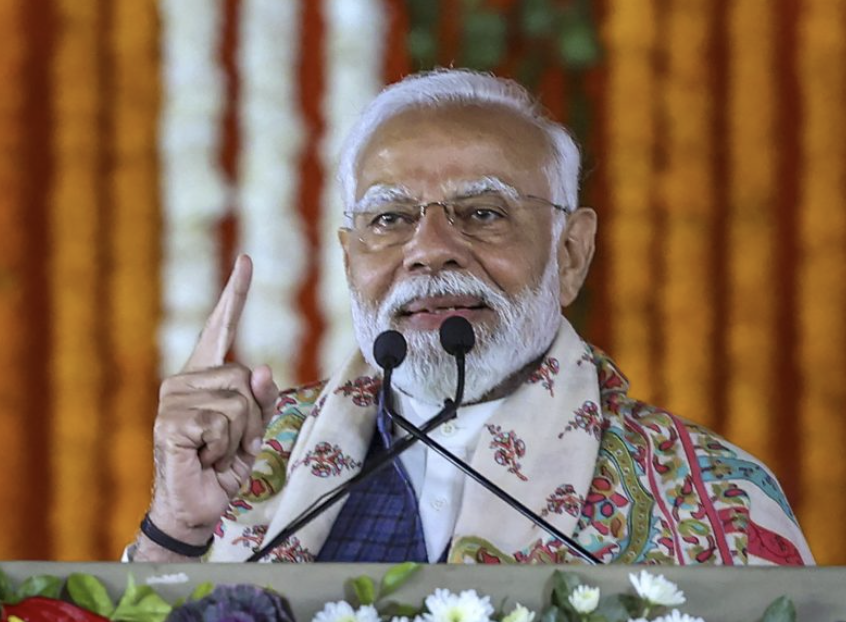The border standoff between India and China erupted in May 2020. While the two sides have had partial success in disengaging rival soldiers from some friction areas on LAC, talks are still on to end the deadlock that has derailed the bilateral relationship.
The Indian Army is swiftly upgrading its capability in the Ladakh sector with a variety of weapons and systems including artillery guns, swarm drone systems that can carry out offensive missions in enemy territory, longer range rockets, remotely piloted aerial systems and high-mobility protected vehicles, while also pursuing the development of light tanks for mountain warfare, futuristic infantry combat vehicles (FICVs) and buying new carbines, amid the lingering 30-month standoff with the Chinese army along the Line of Actual Control (LAC), officials tracking the army’s modernisation said on Monday.
The army’s focus on building combat capability along the contested border with China is part of an overarching plan to steadily enhance its operational readiness to counter any challenge presented by the People’s Liberation Army (PLA), said one of the officials cited above, who asked not to be named.
“Capability development is at the heart of the army’s strategy to counter China along LAC. We are following a multipronged approach to strengthen our military posture. Emergency procurements are happening, government clearances for different projects are forthcoming and there is a sharpened focus on indigensiation for capability boost,” he said.
The border standoff between India and China erupted in May 2020. While the two sides have had partial success in disengaging rival soldiers from some friction areas on LAC, talks are still on to end the deadlock that has derailed the bilateral relationship. Disengagement of soldiers from all friction points is absolutely essential before de-escalation of the conflict can take place, and, finally, de-induction of troops and weapons.
“We have covered a lot of ground over the last two and a half years as far as capability development is concerned. A lot of new equipment has already come in and a lot of hardware is planned for induction. We are keeping our guard up to deal with any contingency,” said a second official who also asked not to be named.
The army is pursuing a major firepower upgrade in the Ladakh sector, it is modernising its mechanised forces at a rapid pace and also equipping infantry soldiers with new systems to improve their combat capabilities and effectiveness.
“China respects strength, and we have to mitigate the China challenge from a position of relative strength. The strength demonstrated by the Indian armed forces along LAC is being observed by China. Thus, it is imperative to enhance our combat effectiveness, operational readiness and defence preparedness along LAC, especially in eastern Ladakh where frontline soldiers from the two armies are in close proximity to each other,” said former director general of military operations Lieutenant General Vinod Bhatia (retd).
The army is implementing a raft of plans for the modernisation of its combat arms.
The army’s artillery capability boost covers induction of more 155mm/52-calibre tracked self-propelled K9 Vajra-T guns, additional 155mm/45-calibre Dhanush towed guns, the new 155mm/52-calibre advanced towed artillery gun system (ATAGS), upgraded guns named Sharang, longer range Pinaka rocket systems and precision ammunition, as previously reported by HT. All these projects will boost the Aatmanirbhar Bharat (self-reliant India) campaign.
The light tank is another key capability that the army needs to tackle the increased threat that persists along LAC. The future tank has already been named Zorawar after Dogra king Gulab Singh’s legendary general, Zorawar Singh. The army expects the light tank prototype development and trials in three years. It will be packed with cutting-edge technologies including drone integration, active protection systems and superior situational awareness.
New indigenous capabilities for the mechanised infantry include FICVs, night-fighting gear, anti-drone weapons, and intelligence, surveillance and reconnaissance (ISR) platforms. These capabilities will transform the mechanised infantry into a more lethal, agile and integrated force capable of delivering a swift and effective response in battle, officials earlier said.
The Indian and Chinese armies have held 16 rounds of military talks so far, but problems at Depsang in Daulet Beg Oldi sector and Charding Nullah Junction (CNJ) in Demchok sector are still on the negotiating table.









